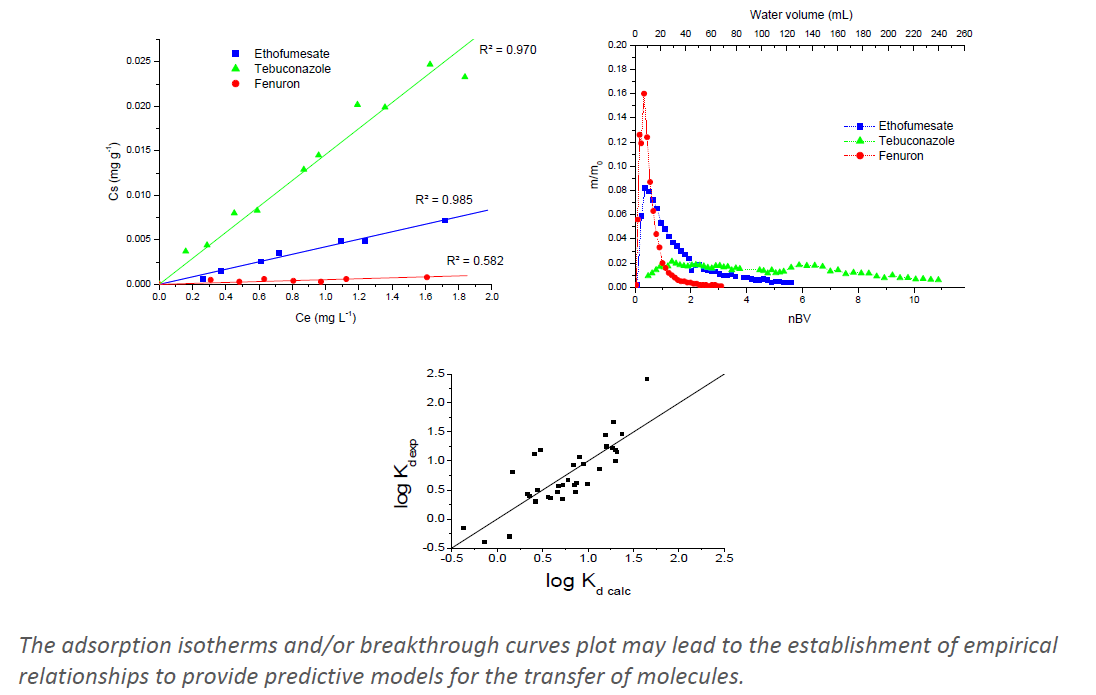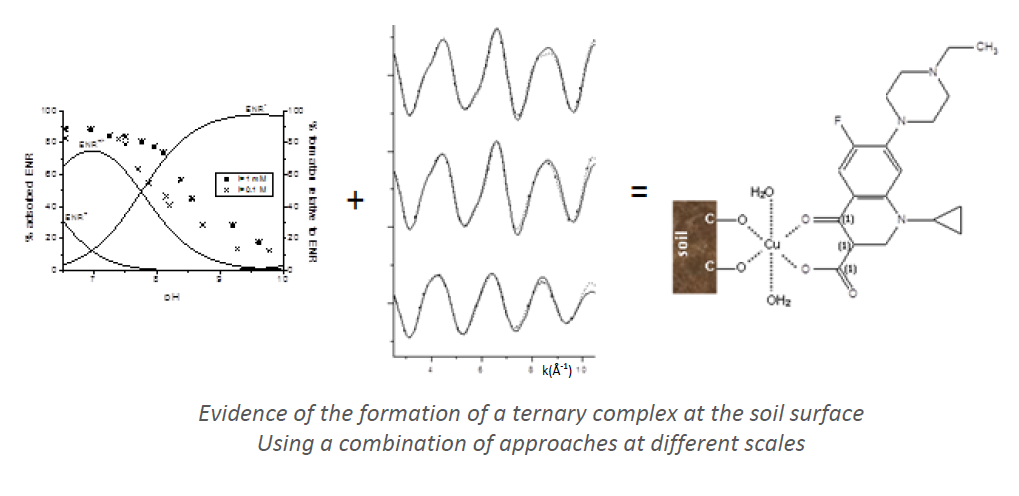Team members:
Permanent staff
Emmanuel Guillon - Full professor
Nicolas Maurin - Engineer
Stéphanie Sayen - Associate professor
Non-permanent staff
Veronica Baldasso - PhD student
Noémie Célaries - PhD student
Phuong Quynh Nguyen - PhD student
Skills:
- Organic and inorganic pollutants transfer in the environment
- Multi-scale approach of the sorption phenomena
- Characterization and modelisation of solid-solution interactions
- Remediation to the pollutions
- Water integrated management in rural zone
The research team activities are devoted mainly to the study and understanding of the transfer phenomena of organic (pesticides and emerging pollutants) and inorganic (trace metals) pollutants in soils, sediments, sludges from wastewater treatment plants (WWTPs), digestates…
A methodology based on both the study of sorption isotherms and the use of surface analysis physicochemical techniques (XANES and EXAFS, X-ray fluorescence, XPS, SEM/EDX,
EPR, solid state NMR), allows to take into account the surface properties of various natural solids (solid-solution interface) and thus to better understand the transfer phenomena of pollutants in the environment.
The main objectives of the team are to get information at the macroscopic scale, which combined with those obtained at the molecular level, should allow to establish relevant predictive systems of pollutants transfer. These studies are conducted on an applied and a fundamental level.
The sorption study of the pollutants on surfaces is addressed in an original way, with a multi-scale physico-chemical approach. It is fundamental to be able to verify the validity of extrapolations and modelisation at all scales to validate the predictive systems. This is particularly the case in the study of the solid surfaces reactivity for which the knowledge of all the interactions is particularly important in the understanding of the reactivity mode.
In this context, our activities are divided into three main areas:
1 - Transfer of metallic trace elements in the environment
In this theme, the work is carried out on soils, sediments, and digestates or sludges from sewage treatment plants and amended soils, but also on individual components of these solids.
- Adsorption/desorption isotherms plot
- Column experiments
- Aging
- Modelisation
- Molecular scale speciation



